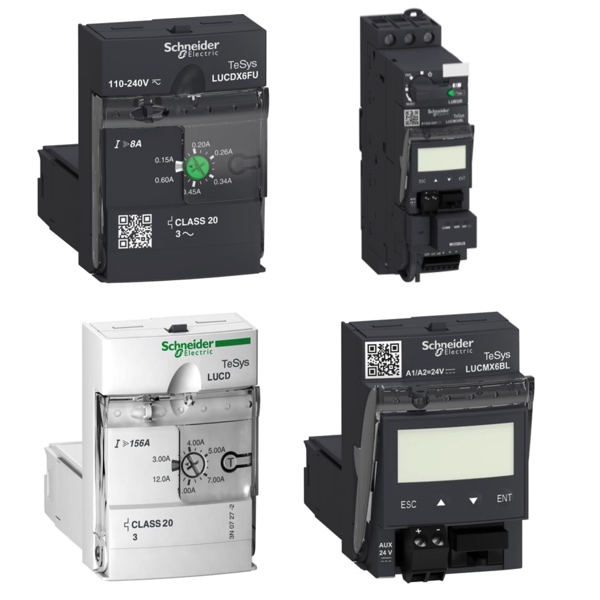IEC Control Units

Combination motor starters provide motor control, overload protection and disconnecting means for branch circuit protecting all within the same enclosure. Combination starters reduce labor cost and the space needed for installation by eliminating the field wiring and conduit connections between the disconnecting means and the motor starter.
IEC starters are sold as components comprising a contactor, an auxiliary block and overload relay block. Each component is selected and assembled without the use of tools. IEC products are more flexible and modular and can snap on DIN rails up to 75mm.
Schneider Electric TeSys U is a self-protected combination starter that will clear a detected fault and protect itself from damage. It provides motor control for a wide range of applications, from a basic motor starter with solid state thermal overload protection to a motor controller which communicates on networks. TeSys U consists of a power base that provides the main contacts (power poles) for the combination starter and a control unit that provides the control and thermal overload functions for the power base. TeSys U utilizes a plug-in modular design to provide flexibility. The 45mm wide power base mounts on either a panel or a 35mm DIN rail and various plug-in components can be selected and installed based on the application requirements.
Motor Control Basics
Motor control allows operational control of electrical motors in various environments.
Motor control circuits provide a safe way to operate electrical motors. Back when motor control circuits were in their infancy, it would have been common to see a simple disconnect switch that would be used to turn on and off a motor. Depending on the size of the motor and how much voltage was required, operating this disconnect would have been dangerous, with a very high possibility of arcing or electrocution. Not to mention that when the disconnect was actuated, the large amount of inrush current would have damaged the motor over time.
In today's motor control circuits, there are a few common pieces of hardware.
A circuit breaker is used to protect the motor and any hardware downstream. A contactor and an overload relay are connected together and function in tandem to allow for remote and safe operation of the motor. The contactor functions much like a relay, allowing for a smaller electrical circuit to remotely close the motor contacts, starting the motor. The overload relay is designed to protect the motor in the case of a prolonged overcurrent event. These two devices are wired in series, so that if the overload relay detects an overcurrent event, the contactor will open the motor contacts, shutting off power to the motor.
The other two most common types of motor control hardware are a soft starter and a Variable Frequency Drive (VFD).
Both of these devices function in a similar way to the motor circuit with some added functions. The soft starter is designed to reduce large inrush current to the motor upon startup. This “soft starting” of the motor will prolong its life and allow for safer operation. The VFD performs the soft start functions, but also allows for speed control of the motor. This speed control is critical in many different environments and has made VFDs one of the most common and safe to use motor control circuits today.

